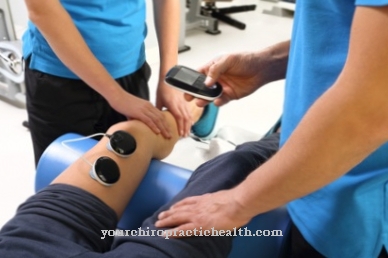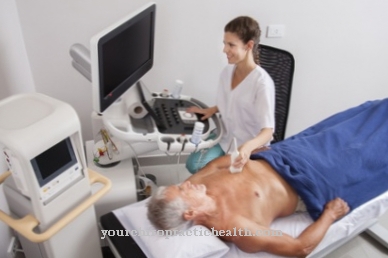Taijiquan, also Tai Chi Chuan or short Tai chi called, is the Chinese Shadow boxing. The martial art was developed in the ancient empire of China. Today, the health-promoting technology is practiced by millions of people worldwide. In China, the movement sequences (forms) of Taijiquan are the traditional popular sport.
What is Taijiquan?

Taijiquan (Chinese: 太極拳 / 太极拳, pronunciation: tʰâid̥ʑ̥ǐtɕʰɥɛ̌n) was originally an "inner" martial art. It was trained for armed and unarmed hand-to-hand combat. Today it is mostly a system of gymnastics or kinetics. It is used for health, personal development and meditation. The fighting aspect is receding more and more.
In different schools and styles, the focus is on the basic exercises and individual movements. This includes breathing and standing exercises as well as meditations while standing. First, the movement principles of Taijiquan are learned. The joints are loosened and the entire body relaxed. Gradually, the posture is corrected and unfavorable stress is avoided.
The "Qi" (pronunciation: Ch’i) has a central meaning in Taijiquan. It should flow and multiply as you practice. The Chinese believe that every person is abundantly endowed with chi from birth. However, the chi decreases more and more with age. The movements should be carried out in a relaxed and flowing manner. The practitioner should learn to perceive and control the Qi. Practitioners describe the sensation of chi as a flow of energy that they can circulate in the body or send to specific parts of the body. This ability serves to maintain health, to control the body and should be applicable in combat.
Function, effect & goals
German Taijiquan schools and teachers place the main emphasis on different aspects of the martial arts. Most people practice it for health reasons, for relaxation and meditation. Only a few followers practice Taijiquan for self-defense, as a martial art or as a way of life.
In Germany there has been the German umbrella organization for Qigong and Taijiquan e. V. (DDQT). Most of the representatives of Taijiquan are affiliated with the association. He has i.a. uniform training guidelines for Taijiquan teachers formulated. The health insurance companies have integrated these into their guidelines for the implementation of Section 20 of the Book V of the Social Code and assume the costs of Taijiquan courses in whole or in part.
In Taijiquan there is no graduation system, such as Belt colors in judo. There is also no standardized clothing. We recommend light, comfortable clothing and shoes with thin, flat soles. The focus of the practice is on one or more shapes from clearly defined sequences of flowing movements. Many forms represent the fight against an imaginary opponent. The form is practiced synchronously in the group.
A shape consists of several individual movements or "images". The names of the pictures either denote the movement (e.g. heel kick left), the character of the movement (e.g. simple whip) or are meant poetically (e.g. the white crane spreads its wings).
Many shapes are named for the number of images, e.g. the 24-picture form. The longest shapes consist of more than 100 images. Depending on the number of images and the speed, a form takes a few minutes to an hour and a half. Taijiquan forms are usually performed slowly and calmly.
The central principle in Taijiquan is softness. The movements should be natural, easy, relaxed and flowing and carried out with a minimum of force. The slowness should enable the movements to be carried out correctly. The Taijiquan fighter does not react to enemy attacks with counterattack techniques. He should use the strength of the opponent and steer against him.
In Taijiquan the body should be "relaxed", i.e. not that the muscles are slack. Only the muscles that are important for movement are tensed. Breathing should be deep and easy and flow naturally. When breathing in the abdomen, the breathing rate is lower than when breathing in the chest. Beginners learn to let their breath flow freely and adapt to movements.
The movements should be carried out attentively and consciously. The practitioner should divide his concentration evenly between the perception of his own body and the environment.
10 basic rules:
- Keep your head relaxed and upright
- Keep your chest back and your back upright
- Leave the back and waist loose
- Keeping emptiness and abundance apart (distribute weight correctly)
- Let your shoulders and elbows sag
- Use Yi (intention) instead of muscle power
- Coordinate above and below
- Find harmony between inside and outside
- Perform flowing movements without interruptions
- Practice in calm movements
You can find your medication here
➔ Medicines against tension and muscle painSpecial features & dangers
Movement exercises play an important role in traditional Chinese medicine (TCM). The aim is to increase the Qi and to make the body and meridians permeable for it. Above all, Qigong and Taijiquan are used for this. The exercises are practiced preventatively in order to maintain general mental and physical health for as long as possible.
They are used less for the targeted treatment of illnesses or complaints. The positive effects of Taijiquan on health are far more extensive than the effects of other sports activities. Clinical studies show that Taijiquan has a positive effect on physical and mental health, e.g. Cardiovascular, immune, pain, balance, flexibility, body control and strength. Risks and side effects of Taijiquan are not known.

























.jpg)

.jpg)
